India
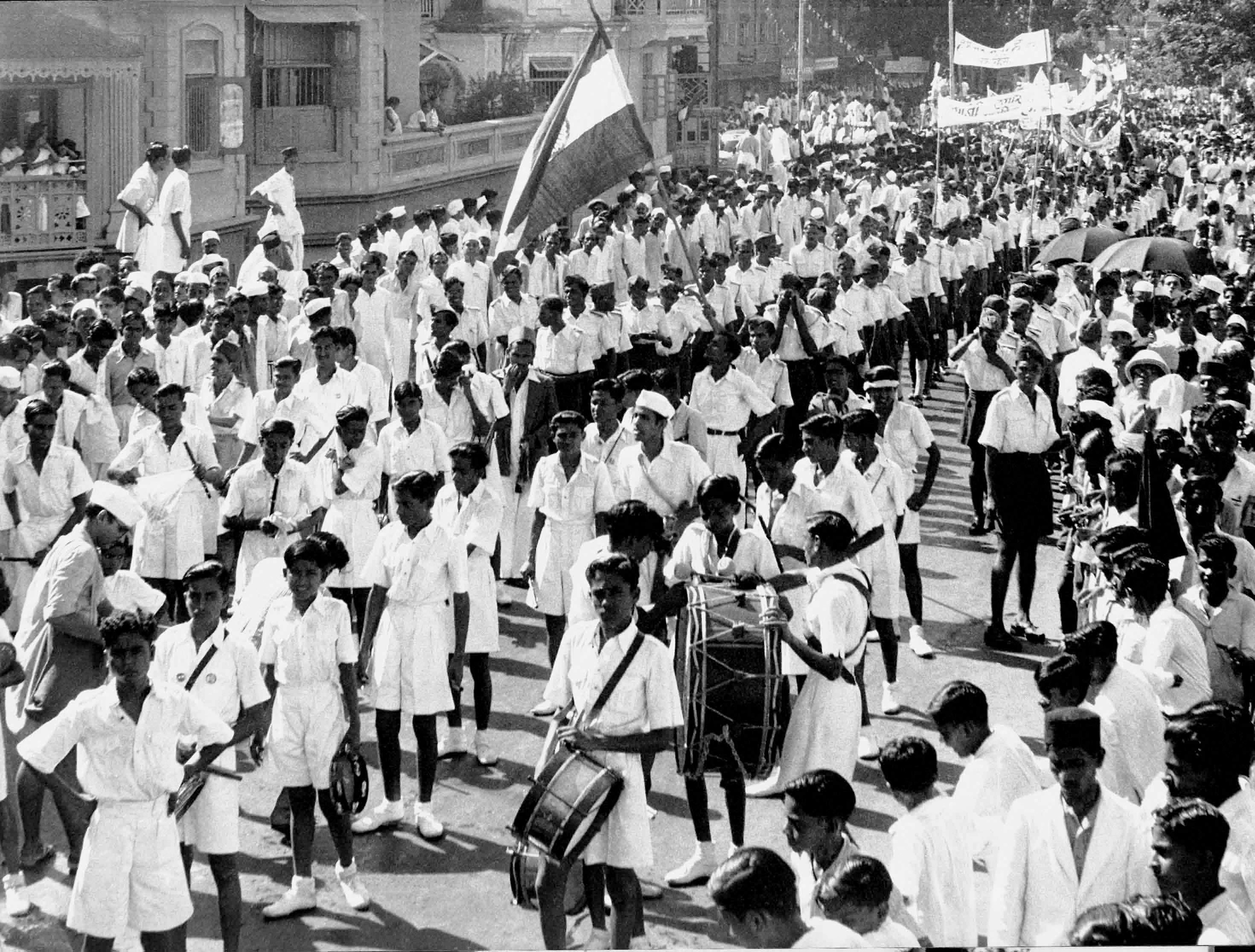
The first independence celebration in Bombay, now Mumbai, Maharashtra, India, on August 15, 1947.
Source: Dinodia Photos via Getty Images
The leading independence party in India, known as the Indian National Congress (INC), was founded in 1885, just thirty years after India was colonized by Britain. The INC, which included prominent revolutionaries such as Mohandas Gandhi, led a nonviolent resistance movement to fight British colonization. It called on citizens to quit colonial government jobs, renounce British titles, and boycott imported British goods by producing things like salt and cloth at home. The movement also temporarily united Hindus, Muslims, and people of different castes. In 1947, the colony won its independence, but the alliance between Hindus and Muslims proved untenable, and the country split into two separate states—India and Pakistan.
Ghana
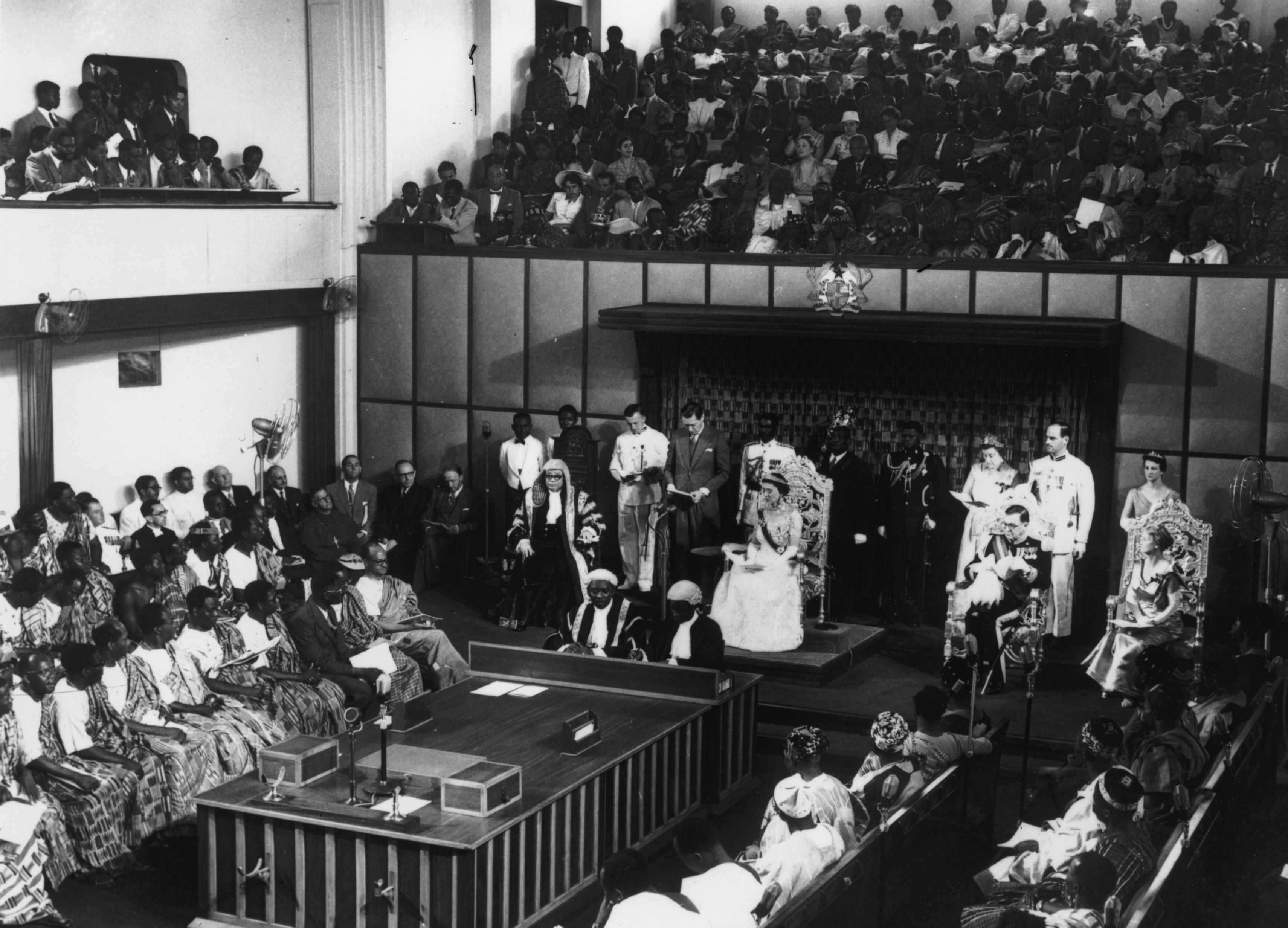
The Duchess of Kent reads a speech from the British queen in the National Assembly of Ghana, granting independence to the Gold Coast, on February 11, 1957.
Source: Central Press via Getty Images
Anti-colonial protests took hold in Ghana in 1948, after colonial police killed Ghanian military veterans protesting their lack of compensation for fighting alongside British troops in World War II. Riots broke out in Accra and, to quell the unrest, the British government instituted an all-African congress to slowly transition the country to independence. But this was not enough for many Ghanians. In 1950, a pro-independence party called the Convention People’s Party launched a national strike; for twenty-one days, Ghanaians did not go to work or buy British products. Less than a year later, the British colonial government held elections for a new legislative assembly, and by 1957, the assembly successfully requested independence from Britain, thus creating a newly independent nation.
Indonesia
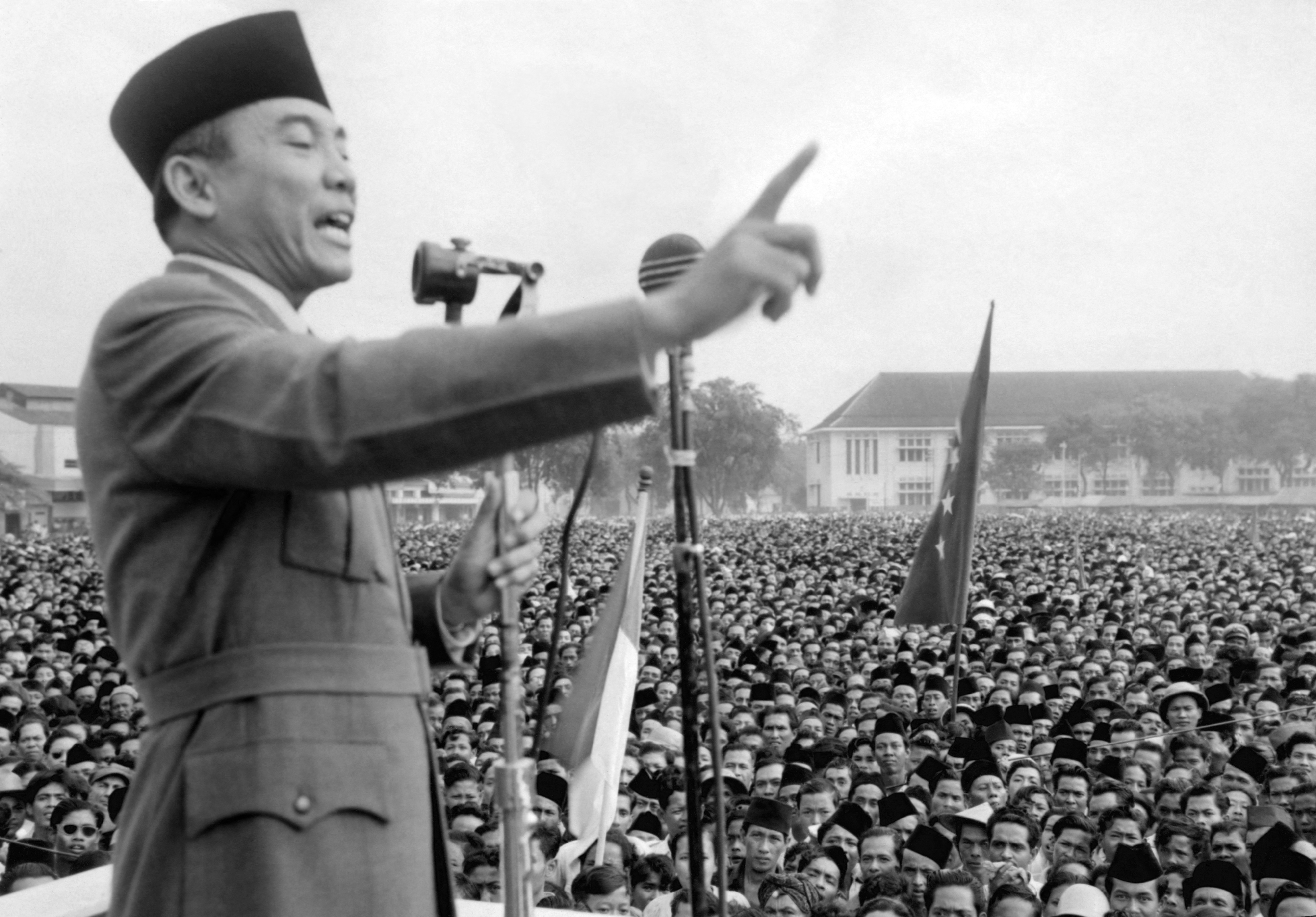
Achmed Sukarno, the leader of the Indonesian National Party, addresses a rally of 200,000 people in Macassar, demanding independence from the Netherlands in an undated photo. Indonesia was granted independence in 1945.
Source: AFP via Getty Images
Like many other East Asian nations, Indonesia—a former colony of the Netherlands—was occupied by Japan during World War II. With the war drawing to an end, Indonesian revolutionaries foresaw a Japanese retreat and declared their nation’s independence in 1945. However, in the months after the war, the Netherlands attempted to regain control of its former colony, resulting in a four-year guerilla war. During the conflict, the Netherlands engaged in brutal military campaigns that killed thousands of Indonesians, causing international opinion to favor Indonesian independence. In 1949, the UN brokered a peace deal, giving Indonesia its independence under the condition that the new government accept $1.2 billion of debt to the Netherlands.
Syria
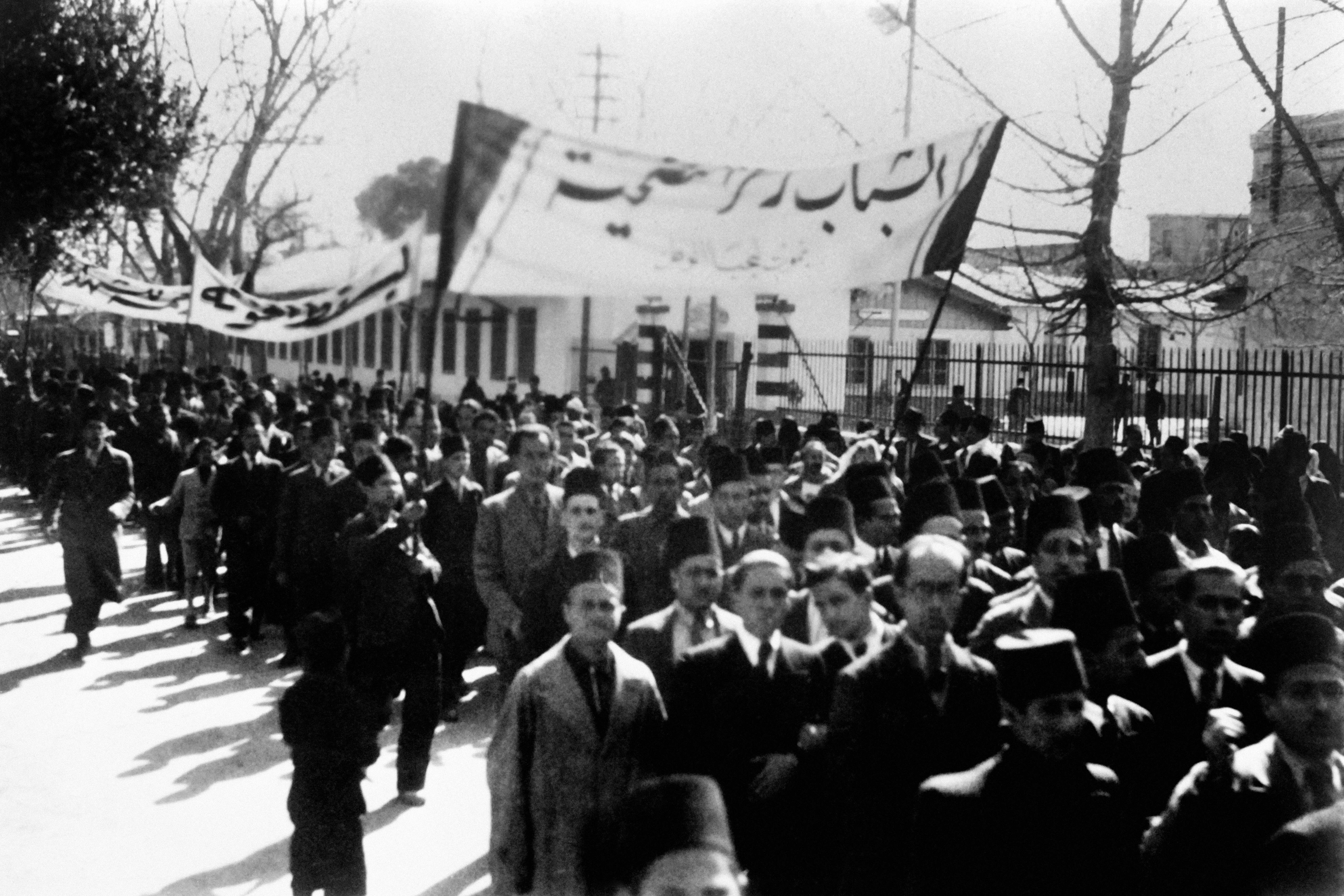
Demonstrators in the streets of Damascus, Syria, in 1936. France and Syria signed a treaty of independence ending the French protectorate and occupation from 1920 to 1936 in Syria, but France refused to ratified the treaty.
Source: AFP via Getty Images.
In 1916, after the fall of the Ottoman Empire, Britain and France—the victors of World War I—divided up Ottoman land. Syria fell under French rule, but by 1925, Syrian revolutionaries called for independence. From 1925 to 1927, revolutionaries fought against France in a period called the Great Syrian Revolt—in one instance, France retaliated by bombing Damascus for nearly twenty-four hours straight. In the years after the revolt, France’s prime minister proposed a treaty offering Syrians a pathway to independence, but it was never ratified by the French parliament. Syrians finally achieved their independence during World War II, after Britain and the Free French—a resistance movement against France’s wartime Vichy government—invaded Syria to liberate it from the Vichy regime.
Malaysia
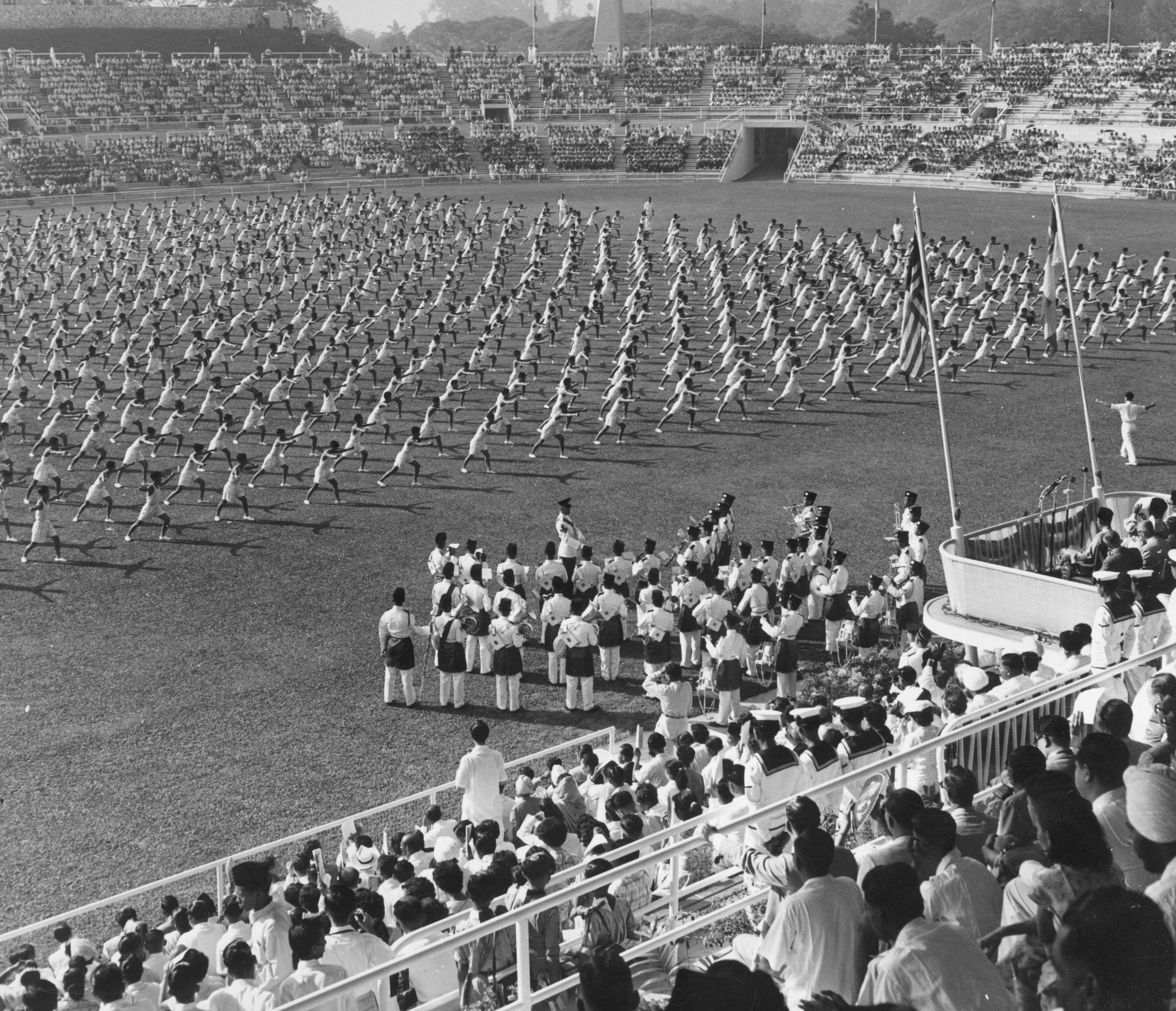
Children from schools in Kuala Lumpur mark the independence of Malaya, now Malaysia, with a display of physical training at Mordoka Stadium on September 2, 1957.
Source: Keystone via Getty Images
During World War II, Japan occupied modern-day Malaysia—which was then made up of eleven different territories inhabited by three ethnic groups: Malays, Chinese, and Indians. Following Japan’s defeat in the war, Britain implemented a system called the Malayan Union that unified the separate islands and gave all citizens equal political and citizenship rights. But the indigenous ethnic majority, the Malays, feared the union would strip them of political power. They protested, causing Britain to dissolve the union and negotiate a new system which provided Malays special rights. In retaliation, a communist movement—made up primarily of the ethnically Chinese minority—launched a twelve-year guerilla war against British colonial rule. By 1957, Britain suppressed the communist movement, and the Federation of Malaya, which later became Malaysia, secured independence.
Morocco
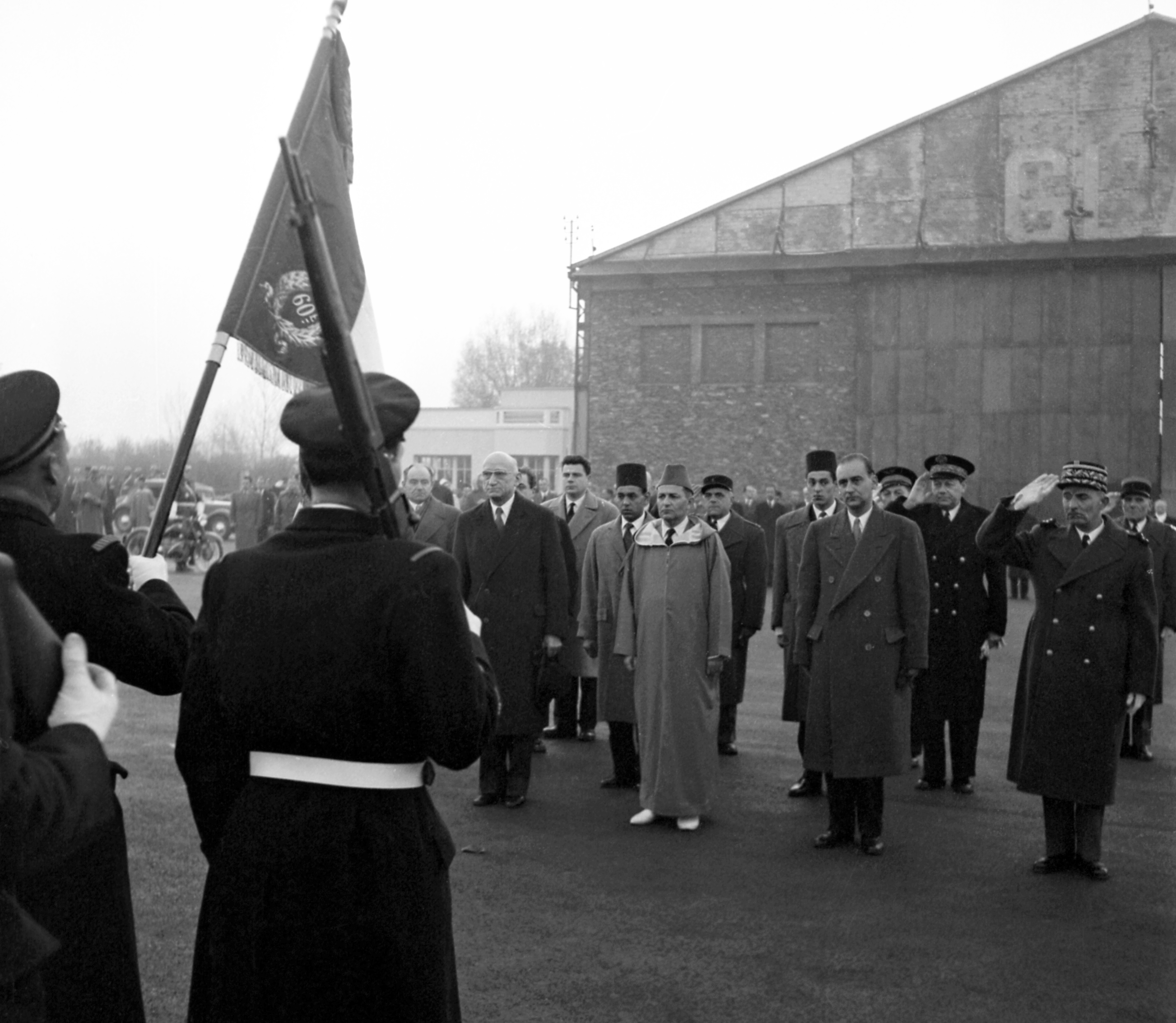
French Minister of Justice Robert Schuman (first row, first from the left) came to greet the Sultan of Morocco Sidi Mohammed ben Youssef (first row, second from the left) after more than a year of exile, at the Villacoublay airfield on November 16, 1955.
Source: AFP via Getty Images
In 1912, the sultan of Morocco signed the Treaty of Fez, exchanging his country’s independence for French military protection against a rebellion. The treaty allowed the sultan to retain some power but gave France control of southern Morocco and Spain rule of northern Morocco. In 1943, after years of protests and rebellions against European rule, Moroccans founded a pro-independence party called Istiqlal. Four years later, after French forces massacred Istiqlal protestors, the sultan changed his position and began advocating for the country’s independence. The sultan became a symbol for the independence movement, and was eventually deported by the colonial government. But in his absence, protests only grew stronger. In 1956, France and Spain ceded to the independence movement, bringing the sultan back to Morocco and reinstating him as leader.